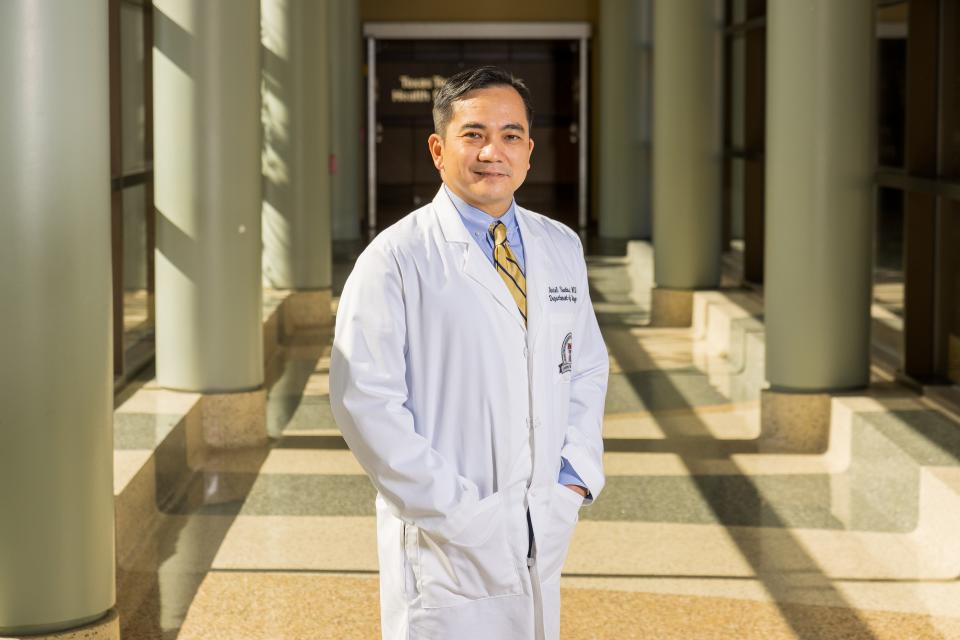Tech Doc: Benefits to telemedicine: Virtual visits an improvement, not replacement for patient care
The COVID-19 pandemic dramatically and permanently changed the telehealth landscape. Telehealth, using technology to deliver health care at a distance, represented less than 1% of total academic medical centers’ visits before the pandemic. At the height of the pandemic in April 2020, telehealth visits surged to more than 50% of all faculty practice plan evaluation and management visits.

Texas Tech University Health Sciences Center (TTUHSC) launched telemedicine initiatives in 1989 and has done more than 160,000 telemedicine consultations for populations in rural communities, schools and prisons. At least 550 clinic providers have accessed or used telemedicine.
What is the difference between telehealth and telemedicine? Both terms are often used interchangeably but telemedicine refers to direct clinical care, such as when you see your doctor. Telehealth is a much broader umbrella which includes telemedicine and technological aspects of delivering health care, such as wearable devices and consumer and other health education.
Of the 108 counties in the TTUHSC service region, 20 have no practicing physician and 11 have no physician, nurse practitioner or physician assistant. Outside urban centers there are very few specialty providers, resulting in many patients traveling long distances to seek medical care.
Patients should ask their primary health care providers if telemedicine through their personal mobile device or computer is an option for them. The examination can include the use of equipment including a camera, an otoscope, a stethoscope and an EKG. So, physicians here in Lubbock can see in detail the person they are examining in another city. A patient could still request an in-person appointment, but through telemedicine, the chances of preventing readmission or seeing if there is a problem early on are better.
Other physicians in multiple specialties such as nephrology, cardiology, pulmonology, dermatology, infectious diseases, pediatrics and obstetrics/gynecology use telemedicine in areas where there is a shortage of specialists. In the case of burn patients who might have difficulty traveling to see a specialist, TTUHSC physician specialists use telemedicine to provide care in El Paso, Texas. With the surge in psychiatry and mental health care needs after the start of the COVID-19 pandemic, telemedicine revolutionized delivery of behavioral health and is the leading user of this modality.
Even before this pandemic, we were using telemedicine for managed care in correctional facilities. We save money because incarcerated patients don’t need to be transported to our clinic and we still provide quality care to our patients.
Other adopters, which might come as a surprise, include the elderly population. In a study by the AARP, approximately one-third of older Americans said they intend to use telemedicine in the future, and 51% of older adults said they or a family member used telemedicine during the past two years.
There are numerous benefits to using telemedicine. The obvious one is that it’s a cost-effective way to get health care because patients don’t have to travel and can save the cost associated with that. Patients don’t have to miss an entire day from work. They could save money on child care if necessary. It’s also safer for some patients who might have an early morning appointment. Some patients might drive in from New Mexico, and with the time difference, leave at 5 a.m. for an 8 a.m. appointment.
Even though patients and providers are as comfortable using telemedicine as online banking or shopping, there are still some challenges. One is educating current health care providers. We also need to include telehealth education the curriculum for health care professions because many of us had a crash course during the pandemic. Other issues are payment and compensation for the visit and access to broadband internet.
Telemedicine is not a replacement for current health care — I want to talk to my patient and examine them — but it is a bridge to make health care more accessible.
Ariel Santos, M.D., MPH, is an acute care surgeon for Texas Tech Physicians and the director of the Texas Tech University Health Sciences Center Telemedicine Program.
This article originally appeared on Lubbock Avalanche-Journal: Tech Doc: Benefits to telemedicine: Virtual visits an improvement, not replacement for patient care

